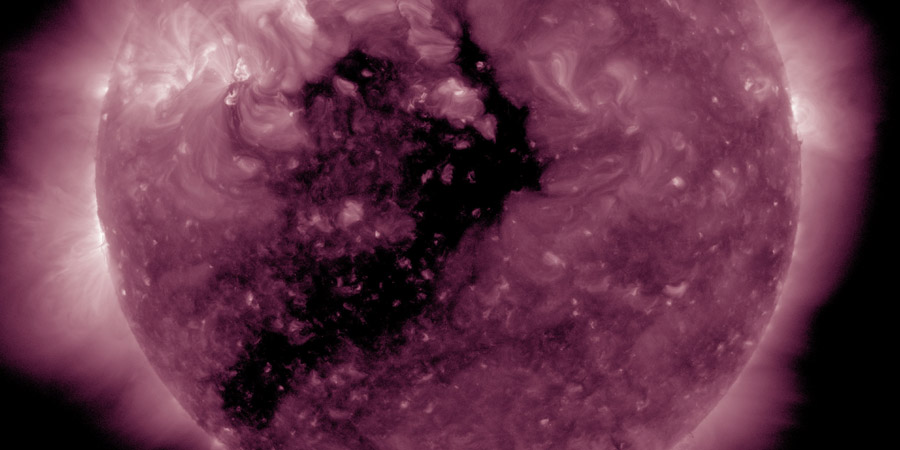Coronal hole faces Earth
Friday, 21 April 2017 09:58 UTC

Sunspot region 2651 remains fairly quiet with only some B-class activity yesterday. It had a small magnetic delta structure yesterday morning but this has decayed leaving not enough magnetic complexity for strong flares. That doesn't mean we should forget about this region as it can still regain some magnetic complexity which would increase the odds of seeing a strong solar flare but for now we should not expect much fireworks from it. But sunspot region 2651 aside, this sunspot region is not our main point of interest in this news article. We have a very familiar solar feature facing our planet right now: a large coronal hole that I'm sure you will recognize from last time around.
A coronal hole is facing Earth. Enhanced solar wind could arrive in ~3 days - Follow live on https://t.co/T1Jkf6i4Cb pic.twitter.com/Y1KQAgY2fD
— SpaceWeatherLive (@_SpaceWeather_) April 20, 2017
This is starting to become a famous coronal hole as this coronal hole has been around for well over a year in all kinds of shapes and sizes. It often caused some decent geomagnetic storming when it faced Earth. During the last rotation it caused moderate G2 geomagnetic storm conditions (Kp6) on 27 March.
Lets compare how this coronal looks like right now and how it looked like during the previous rotation. It changed a little bit, becoming smaller in the southern most portion but arguably increasing in size where it matters most, at the latitudes near the solar equator
That is excellent news as that means we should expect similar solar wind conditions on this rotation as we had during the previous rotation. Based on these facts we conclude that it is not out of the question that we will again experience moderate G2 geomagnetic storm conditions once the solar wind stream arrives. The solar wind stream should take about two to three days to cover the distance between the Sun and the Earth so the solar wind stream is likely to arrive on 23 April. We issue a moderate G2 geomagnetic storm watch for this coming Sunday, 23 April 2017. It is almost new moon as well so excessive moonlight should not be an issue when aurora watching!
Thank you for reading this article! Did you have any trouble with the technical terms used in this article? Our help section is the place to be where you can find in-depth articles, a FAQ and a list with common abbreviations. Still puzzled? Just post on our forum where we will help you the best we can!
Latest news
Latest forum messages
Support SpaceWeatherLive.com!
A lot of people come to SpaceWeatherLive to follow the Sun's activity or if there is aurora to be seen, but with more traffic comes higher server costs. Consider a donation if you enjoy SpaceWeatherLive so we can keep the website online!

Space weather facts
| Last X-flare | 2025/03/28 | X1.1 |
| Last M-flare | 2025/04/20 | M1.0 |
| Last geomagnetic storm | 2025/04/20 | Kp5 (G1) |
| Spotless days | |
|---|---|
| Last spotless day | 2022/06/08 |
| Monthly mean Sunspot Number | |
|---|---|
| March 2025 | 134.2 -20.4 |
| April 2025 | 119.2 -15 |
| Last 30 days | 113.3 -31 |


